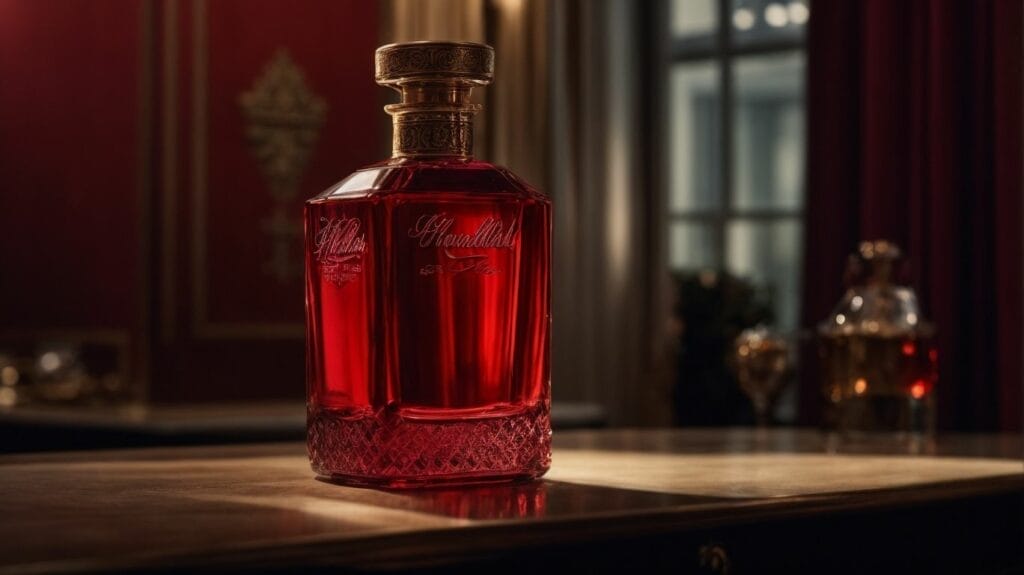Red wine has been a symbol of luxury and sophistication for centuries, and some bottles can fetch prices in the thousands or even millions. But what exactly makes a red wine expensive? And are these wines worth the hefty price tag? Let’s delve into the world of expensive red wines to find out.
Several factors contribute to the high price of red wines. One of the main factors is the grape variety used. Certain grape varieties, such as Cabernet Sauvignon and Pinot Noir, are more expensive to produce and are often used in premium wines.
The region where the grapes are grown also plays a significant role in the price of a red wine. Wines from renowned regions like Bordeaux, Burgundy, and Napa Valley are often priced higher due to their reputation and demand.
The vintage of a wine, or the year it was produced, can also affect its price. Wines from exceptional vintages are highly sought after and can command high prices.
The production method also contributes to the cost of a red wine. Wines made using traditional methods and aged in oak barrels are often more expensive due to the time and effort involved.
So what are the most expensive red wines in the world? According to The Wine Cellar Insider, the top five are:
- Chateau Margaux 1787 – sold for $225,000 at an auction in 1989.
- Screaming Eagle Cabernet Sauvignon 1992 – sold for $500,000 at a Napa Valley charity auction in 2000.
- Romanee-Conti DRC 1990 – sold for $476,280 at a Christie’s auction in 2018.
- Penfolds Grange Hermitage 1951 – sold for $38,420 at a Langton’s auction in 2004.
- Domaine Leroy Musigny Grand Cru 2012 – sold for $39,000 at a Sotheby’s auction in 2014.
Expensive red wines are known for their intense and complex flavors, high-quality grapes, and aging potential. They are often produced in limited quantities, making them highly coveted by wine collectors and enthusiasts.
But are these wines worth the price? It ultimately depends on one’s personal taste and budget. However, there are ways to enjoy expensive red wines without breaking the bank. Consider buying a half-bottle or ordering it by the glass at a restaurant. You can also look for lesser-known regions or producers that offer high-quality wines at more affordable prices.
In conclusion, expensive red wines are a symbol of luxury and have a wide range of characteristics that contribute to their high price. Whether it’s worth the cost is a personal decision, but there are ways to enjoy these wines without spending a fortune.
Key Takeaways:
What Makes a Red Wine Expensive?
When determining the cost of a red wine, there are several factors to consider. These include:
- The rarity of the grape variety
- The region in which it was produced
- The aging process
- The reputation of the winery
For instance, wines made from grapes grown in prestigious regions such as Bordeaux or Burgundy typically have higher prices. Additionally, wines that have been aged for longer periods in oak barrels are often more expensive. Lastly, wines from renowned wineries with a history of producing exceptional wines tend to have a higher cost. Overall, these factors contribute to the elevated prices of red wines.
How is the Price of Red Wine Determined?
When it comes to determining the price of red wine, there are several factors that come into play. These include:
- The quality of the grapes used
- The reputation of the winery
- The aging process
- The rarity of the wine
Grapes from prestigious vineyards and regions often have a higher price tag, and wineries with a long history of producing exceptional wines may also charge more. Additionally, wines that have been aged for longer periods or are produced in limited quantities can command higher prices. Ultimately, the market demand also plays a role in determining the price of red wine, which is a combination of these factors.
One notable example of an expensive red wine is the 1945 Domaine de la Romanée-Conti. This bottle of wine gained legendary status due to its exceptional vintage quality and limited availability. In 2018, a single bottle of this wine was sold at auction for an astounding \$558,000, making it one of the most expensive wines ever sold. This high price is a testament to the meticulous craftsmanship, rarity, and prestige associated with this renowned wine.
What are the Factors that Affect the Price of Red Wine?
Have you ever wondered what makes certain red wines more expensive than others? There are a variety of factors that can influence the price of a bottle, each contributing to the overall cost in their own unique way. In this section, we will delve into the key factors that affect the price of red wine. From the type of grapes used to the region where they are grown, to the year they were harvested and the production methods used, we will uncover the reasons behind the high price tags of some of the world’s most expensive red wines.1. Grape Variety
The type of grape used is a crucial factor in determining the characteristics and quality of red wine. To properly assess the grape variety, follow these steps:
- Research the various grape varieties commonly used in the production of red wine, such as Cabernet Sauvignon, Pinot Noir, Merlot, and Syrah.
- Familiarize yourself with the unique characteristics of each grape variety, including flavor profiles, tannin levels, acidity, and aging potential.
- Consider personal preferences and desired taste experience when selecting a red wine based on the grape variety.
- Explore renowned regions known for producing exceptional red wines from specific grape varieties, such as Burgundy for Pinot Noir or Bordeaux for Cabernet Sauvignon and Merlot.
- Experiment with different grape varieties to expand your palate and discover new favorites.
2. Region
The region where red wine is produced plays a significant role in determining its price and quality. Here are some steps to consider when evaluating the region of a red wine:
- Research famous wine regions known for producing high-quality red wines, such as Bordeaux, Burgundy, Napa Valley, and Tuscany.
- Learn about the specific appellations or sub-regions within these renowned regions that are well-known for their production of red wine.
- Consider the climate, soil composition, and topography of the region, as these factors greatly influence the flavor profile and character of the wine.
- Examine the reputation and history of the region in terms of producing exceptional red wines.
- Take into account the cost of land and production in the region, as this can impact the price of the wine.
The region of Bordeaux, France, has a long and storied history of winemaking dating back to the Roman era. Its unique terroir, which includes gravelly soils and a maritime climate, has made it one of the most prestigious wine regions in the world, producing renowned red wines like Chateau Margaux.
3. Vintage
Vintage plays a significant role in determining the price and quality of red wine. Follow these steps to understand the importance of vintage:
- Research: Learn about the characteristics of different vintages and how they impact wine flavors and aging potential.
- Consider climate: Understand how weather conditions during the growing season affect grape quality and flavor development.
- Consult experts: Seek advice from sommeliers or wine professionals who can provide insights on specific vintages and their reputation.
- Check reviews: Read reviews and ratings from reputable sources to get an idea of how a particular vintage is perceived by wine enthusiasts.
- Personal preference: Assess your own taste preferences and whether you prefer wines with youthful or mature characteristics.
By considering the importance of vintage, you can make informed decisions when choosing red wines based on their vintage.
4. Production Method
The production method plays a crucial role in determining the price of red wine. Various factors involved in the production process contribute to the overall cost, including grape selection, fermentation techniques, aging methods, and bottling processes. For instance, wines made from hand-picked grapes and aged in oak barrels are typically more expensive due to the labor-intensive and time-consuming nature of these methods. Additionally, wines produced using traditional methods such as the Méthode Champenoise can demand higher prices.
The production method directly influences the quality, complexity, and overall appeal of the wine, making it a vital consideration for wine enthusiasts.
What are the Most Expensive Red Wines in the World?
Red wine is a beloved beverage around the world, with a wide range of prices to fit any budget. However, for those with a taste for the finer things in life, there are a select few red wines that come with a hefty price tag. In this section, we will take a closer look at the most expensive red wines in the world. From the legendary Chateau Margaux 1787 to the rare and coveted Domaine Leroy Musigny Grand Cru 2012, these wines are not only luxurious but also highly sought after by wine connoisseurs.1. Chateau Margaux 1787
Chateau Margaux 1787 is renowned as one of the world’s most prestigious and expensive red wines. To fully appreciate this exceptional wine, follow these steps:
- Decant the wine for a minimum of 2 hours to allow it to breathe and develop its complex flavors.
- Serve it at the ideal temperature of 60-65°F (15-18°C) to enhance the aromas and taste.
- Pair it with rich and flavorful dishes such as roasted lamb or aged cheese to complement its intensity.
- Sip slowly and savor the layers of flavors, from blackcurrant and cherry to subtle hints of tobacco and cedar.
Pro-tip: For an even more special experience, use crystal wine glasses and enjoy Chateau Margaux 1787 in a serene and elegant setting.
2. Screaming Eagle Cabernet Sauvignon 1992
The 1992 vintage of Screaming Eagle Cabernet Sauvignon is highly coveted and considered one of the most expensive red wines. With a limited production of only 175 cases, its rarity greatly contributes to its steep price. This wine is renowned for its intense and intricate flavors, featuring hints of blackcurrant, spice, and oak. Its exceptional aging potential allows it to develop even more depth and richness over time.
In 2000, a single bottle of Screaming Eagle Cabernet Sauvignon 1992 was sold for an astounding $500,000 at a charity auction, solidifying its status as an iconic and exclusive wine.
3. Romanee-Conti DRC 1990
Romanee-Conti DRC 1990 is one of the most expensive red wines in the world. To fully appreciate this exceptional wine, follow these steps:
- Decant properly: Pour the wine into a decanter to separate any sediment and allow it to breathe.
- Use the right glassware: Use a large, tulip-shaped glass to maximize the aroma and flavor.
- Serve at the right temperature: Serve Romanee-Conti DRC 1990 slightly below room temperature, around 60-65°F (15-18°C).
- Sip and savor slowly: Take small sips, allowing the wine to coat your palate and fully experience its complex flavors.
- Pair with food: Pair this wine with delicate dishes like truffle risotto or roasted duck for a perfect match.
4. Penfolds Grange Hermitage 1951
Penfolds Grange Hermitage 1951 is a highly coveted and expensive red wine that is sought after by wine enthusiasts all over the world. Originating from Australia, this wine is renowned for its exceptional quality and ability to age well. Made from Shiraz grapes and aged in American oak barrels, it boasts a rich and complex flavor profile. Due to its rarity and limited production, it commands a high price. If you are fortunate enough to experience this wine, take your time and savor each sip. Keep in mind, luxurious wines like Penfolds Grange Hermitage 1951 are best enjoyed on special occasions or shared with fellow wine lovers.
5. Domaine Leroy Musigny Grand Cru 2012
The 2012 Domaine Leroy Musigny Grand Cru is renowned as one of the most expensive red wines in the world. Its intense and complex flavors, high-quality grapes, and potential for aging make it a true representation of a luxury red wine. Due to its limited production and prestigious vineyard, this wine has become a highly sought after item among collectors and wine enthusiasts. However, for those who may find the price tag daunting, there are ways to still enjoy expensive red wines without breaking the bank. Consider sampling smaller portions at wine tastings or seeking out more affordable options from the same producer.
What are the Characteristics of Expensive Red Wines?
When it comes to red wine, there is a wide range of prices that can leave many wondering what sets the most expensive red wines apart from the rest. In this section, we will delve into the characteristics of these high-priced wines that make them so coveted. From intense and complex flavors to limited production, we will explore the key elements that contribute to the hefty price tag of these wines. So, let’s raise our glasses and dive into the world of expensive red wines.1. Intense and Complex Flavors
Expensive red wines are known for their intense and complex flavors, which are the result of various factors. To fully appreciate these flavors, follow these steps:
- Choose the right glassware: Use a large, tulip-shaped wine glass to capture and concentrate the aromas.
- Decant the wine: Pour the wine into a decanter to allow it to breathe and open up, enhancing its flavors.
- Take your time: Savor the wine slowly, allowing the flavors to unfold on your palate.
- Pair with complementary foods: Pair the wine with rich, flavorful foods that can complement and enhance its complex flavors.
- Experiment with temperature: Try serving the wine at different temperatures to bring out different flavor profiles.
By following these steps, you can fully experience the intense and complex flavors of expensive red wines without breaking the bank.
2. High Quality Grapes
To ensure high-quality grapes in red wine production, follow these steps:
- Choose the right grape varieties known for their exceptional quality, such as Cabernet Sauvignon, Pinot Noir, or Nebbiolo.
- Pay careful attention to the vineyard’s location, soil composition, and climate, as these factors greatly influence grape quality and contribute to producing high-quality grapes.
- Implement proper vineyard management techniques, including pruning, canopy management, and pest control, to optimize grape health and flavor development.
- Harvest the grapes at the optimal level of ripeness, taking into account sugar levels, acidity, and tannin maturity.
- Handle the grapes delicately during transportation and processing to minimize damage to the fruit and preserve its high quality.
3. Aging Potential
The aging potential of red wine is an important factor in determining its value and desirability. Here are some steps to determine the aging potential of a red wine:
- Research the grape variety to understand its typical aging potential.
- Consider the region where the wine is produced, as certain regions are known for producing wines with excellent aging potential.
- Look for information on the vintage of the wine, as some years produce wines that are more suitable for aging.
- Take into account the production method, as wines made using traditional techniques often have better aging potential.
Fact: Some red wines can continue to improve in flavor and complexity for several decades, making them highly sought after by collectors and enthusiasts.
4. Limited Production
Limited production is a key factor that contributes to the high price of red wines. Here are the steps involved in the limited production process:
- Small Vineyards: Limited production wines are often sourced from small vineyards that have a limited amount of land for grape cultivation.
- Hand Harvesting: To ensure the highest quality, limited production wines are often harvested by hand, allowing for careful selection of the grapes.
- Low Yield: Limited production wines have a low grape yield per acre, resulting in a smaller quantity of wine produced.
- Selective Winemaking: The winemaking process for limited production wines involves meticulous attention to detail, using premium techniques and equipment.
- Aging in Oak Barrels: Many limited production wines are aged in oak barrels for an extended period, adding complexity and richness to the flavor profile.
These steps ensure that limited production wines are crafted with utmost care and precision, making them a rarity and commanding a higher price in the market.
Are Expensive Red Wines Worth the Price?
For some, the complexity, craftsmanship, and prestige of expensive red wines make them well worth the price. However, whether or not they are truly worth it is a matter of personal preferences and budget. These wines often go through meticulous production processes, such as aging in oak barrels, which can enhance their flavors and aromas. They may also originate from renowned wine regions and vineyards known for their exceptional quality. Ultimately, it is up to the individual to determine if the experience and perceived value of expensive red wines justify their cost.
How Can You Enjoy Expensive Red Wines without Breaking the Bank?
Looking to enjoy expensive red wines without breaking the bank? Here are some tips to help you savor these wines without draining your wallet:
- Consider looking for second labels or secondary wines from prestigious wineries. These options often offer great value at a lower price.
- Join a wine club or subscription service that provides discounts on premium wines.
- Attend wine tastings or events where you can sample expensive wines in smaller pours.
- Explore lesser-known wine regions that produce high-quality red wines at more affordable prices.
- Consider purchasing wines from previous vintages, as they are often discounted to make room for new releases.




